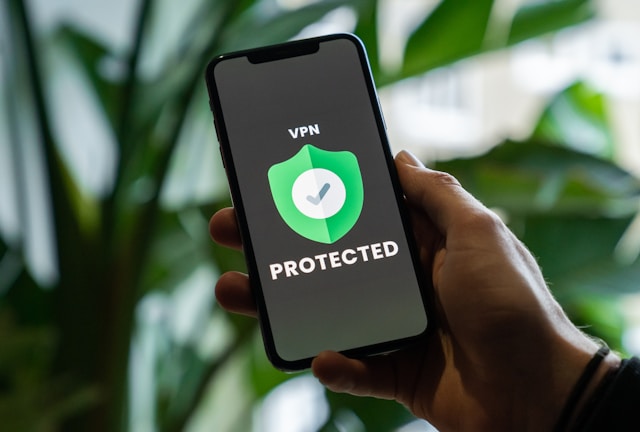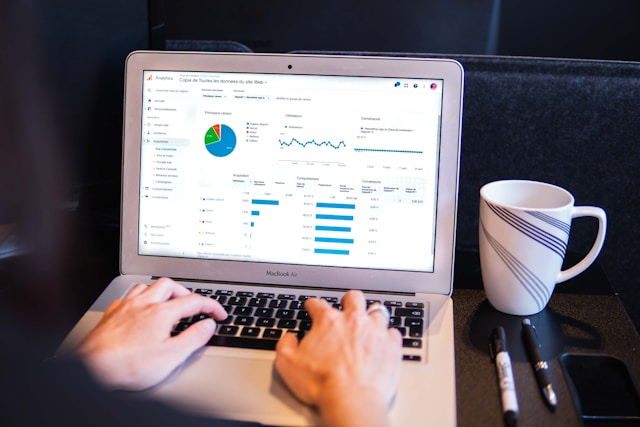Beginner advertisers often find themselves confused about geofencing vs geolocation.
Almost everyone with a smartphone regularly uses geolocation services. For example, geolocation is at play when you book a ride on a ride-hailing app. The system geolocates you and the rider to help you track each other on the map.
One important geolocation-based service is geofencing. Have you ever received an Uber notification welcoming you to a new city when your flight lands at the airport?
This is geofencing in action. It occurs when your device enters an area marked by Uber on the map. Does it sound a little confusing? Don’t worry!
In this article, we’ll explain what is the difference between geofencing vs geolocation. We’ll first explore how they differ in working and then explore their distinct use cases. Read on!

Table of Contents
What Is the Difference Between Geolocation vs Geofencing
Geolocation is the process of finding the geographical location of a device using GPS, Wi-Fi, or cellular networks. This allows users to pinpoint precise locations on a map. Geolocation determines where a device is at any given moment.
On the other hand, geofencing is the process of creating a virtual boundary around a specific area. The geofencing system triggers a predefined response when a mobile device enters or exits this region.
Geofencing uses geolocation data to monitor and manage the movement within a set boundary. In short, geolocation is an umbrella term under which geofencing falls, as geofencing relies on geolocation data to function.
Geolocation uses satellites (GPS), WiFi signals, and cell towers to determine the precise location of a device. Mobile devices equipped with these technologies communicate with these external sources to calculate their position accurately. This technology is essential for mapping, navigation, and location-based searches.
Geofencing builds on geolocation by adding a layer of security and control. It requires the same geolocation technologies to function but adds software that defines and monitors the virtual fence.
When a device crosses this boundary, the system can trigger specific actions. A good example is child location services, which notify parents when their child leaves an area such as school.
To further understand the difference between geolocation and geofencing, let’s take a fitness app that tracks your run as an example.
The app will use geolocation to map your route and calculate distance and speed. If you use the same app to set a virtual fence around your neighborhood park, you’ll be geofencing.
Now, the app will alert you when you’ve entered or left that area for safety or other purposes.
Let’s explore how geolocation vs geofencing cyber security measures differ in their approaches.

Geolocation VS Geofencing Cyber Security
Geolocation and geofencing enhance cybersecurity in different ways. Geolocation helps track the geographic location of devices to detect potential threats. For instance, if a login attempt comes from an unexpected location, it can trigger a security alert.
Geofencing adds a virtual layer of security by creating boundaries around sensitive areas. When a device enters or exits these areas, it can trigger specific security measures.
For example, a company might use geofencing to restrict access to sensitive data within their office premises only. This way attempts to access data from outside trigger security protocols.
A comprehensive cybersecurity strategy is a matter of combining geolocation and geofencing rather than pitting geofencing vs geolocation.
This combination strengthens security by providing precise location data and enforcing virtual boundaries. It helps protect against unauthorized access and potential breaches.
For example, a financial institution can use geolocation to monitor transaction location. If a transaction occurs outside the customer’s usual geographic location, it triggers a security alert.
Adding geofencing, the institution can set virtual boundaries around authorized locations. If a transaction attempts outside these areas, the system can block it automatically. This dual-layer security ensures location verification and boundary control to protect against fraud.
Now, let’s compare how geo fencing vs geo location applications differ.
4 Common Geolocation Applications
Geolocation is a useful technology and provides many benefits to businesses. Here are some key uses of geolocation technology.

1. Navigation and Mapping
Navigation apps like Google Maps and Apple Maps are prime examples of geolocation applications. These apps use GPS to provide real-time directions and display the user’s precise location on a map.
They help users find the best routes, avoid traffic, and reach their destinations efficiently.
2. Location-Based Marketing
Retailers use geolocation to target potential customers with personalized content. For instance, using geolocation, e-commerce websites display content relevant to the visitor’s region, language, and currency.
This strategy has a higher chance of converting visitors into customers. It also helps increase the return on investment (ROI) for advertising campaigns.
3. Fraud Prevention
Financial institutions use geolocation to detect and prevent fraud. By comparing a transaction’s location to the cardholder’s known location, banks can quickly detect and flag anomalies.
Moreover, geolocation can help users find nearby ATMs or send money to friends who are physically close.
4. Website Security
Geolocation helps prevent bad website traffic by using geoblocking. This restricts access to websites or specific content based on the user’s location.
It provides protection against Distributed Denial of Service (DDoS) attacks and unauthorized access from specific regions.
4 Common Geofencing Applications
Geofencing technologies enable businesses and individuals to create virtual boundaries for various purposes. Here are four common geofencing applications.

1. Fleet Management
Geofencing helps track and manage vehicle fleets. Companies can monitor vehicle locations to ensure they stay within designated routes.
The system triggers alerts if vehicles deviate from the set paths to enhance efficiency and avoid legal issues.
2. Home Automation
Geofencing integrates with home automation systems. For instance, smart home or Internet of Things (IoT) devices can activate when a homeowner approaches.
For example, lights can turn on, or thermostats can adjust automatically to create a personalized and energy-efficient environment.
3. Employee Monitoring and Child Safety
Businesses use geofencing to monitor employee movements within work areas. This ensures employees remain in designated zones for security and productivity. Companies may set alerts for unauthorized zone entries.
Parents also use geofencing devices to ensure their children’s safety. They receive alerts if their children leave these safe zones by setting virtual boundaries around schools or parks.

4. Marketing and Promotions
Businesses use geofencing for marketing by sending promotional messages to potential customers’ mobile devices living in a specific neighborhood.
For example, a retail store can notify nearby customers about ongoing sales and product launches. This can boost foot traffic and customer engagement.
Geofencing vs Geolocation: geoPlugin Serves Both!
Comparing geofencing vs geolocation revealed slight differences in working and applications.
While geolocation provides the foundational technology to determine precise locations, geofencing applies this data to create and manage virtual boundaries.
Without geolocation, geofencing and other location-based services are impossible. Both technologies have numerous financial and security benefits for businesses and institutions.
If your company is not using these technologies yet, you’re missing out on a great deal. But it’s not too late. geoPlugin offers geolocation services, which are the backbone of techniques such as geofencing, geoblocking, and geomarketing.
geoPlugin helps businesses respect regional regulations such as the General Data Protection Regulation (GDPR) and European Union (EU) cookie law.
So sign up for geoPlugin today and enhance your business operations with advanced geolocation techniques!












